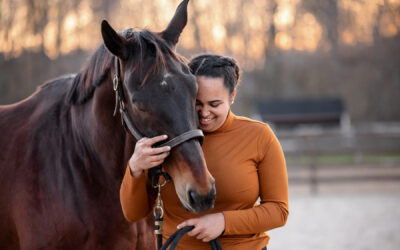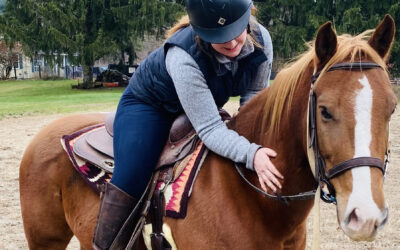Blog
What does the term “stakeholder” mean?
Often in today’s social movements the term “stakeholder” is thrown around as a generic and sometimes misunderstood term. Social movements are usually started by interested parties that have some “skin in the game” or a vested interest in addressing an issue. We use the term stakeholder frequently at The Right Horse as nothing is more critical to building a successful collaborative movement than the very people sitting at the table. It occurred to us recently that not everyone may truly understand the definition of a stakeholder, who the stakeholders are and why they are important.
The technical definition of stakeholder is a person or business with an interest or concern in something. In this context, that “something” is the plight of at-risk horses in the United States. As we discussed in the blog post about collaboration, the horse world is richly diverse with a vast array of disciplines, philosophies, cultures and most importantly perspectives. When we began forming The Right Horse we quickly assembled a panel of people who represented a wide array of interests in the horse world but shared our common goal. Each party came to the table with their own reasons for caring deeply about the plight of at-risk horses in our country and each has something to lose if something is not done. We set out to create a group of people who had not traditionally sat down together to discuss collaborating, and incorporated each of their perspectives to create a solution that could appeal to all.
Another order of business in the original planning meeting was a discussion of who The Right Horse stakeholders would and should be. It was clear to us we needed the collaboration to expand even further than the original table to include participants such as equine vets, farriers, trainers, universities, equine science students, vet students, horse rescues/transition centers, animal advocates, breed and discipline associations, funders and equine media companies. You see, each of those parties has a vested interest in solving a problem that affects us all. Up until now, there hasn’t been a collaborative effort to incorporate each of the above-mentioned stakeholders.
Our diverse set of stakeholders is what makes The Right Horse Initiative unique and provides us with a well-rounded perspective as we think about creating high impact programs. Let’s take veterinarians, for example: many of them are involved in horse rescue on some level. A veterinarian’s perspective is totally unique to the rescue groups’ perspective regarding what needs to be done to transition horses safely. Some veterinarians offer discounted or donated services to horse rescues, some act as on-site expertise at cruelty/neglect seizures and some foster at-risk horses themselves. However, there hasn’t yet been a planned and coordinated movement by equine veterinarians in this country to create overall change for at-risk horses. Collectively, they have a very respected and powerful voice, so who better to carry forth the importance of the message of adoption? Imagine if they all came together to make a statement about what needs to be done to better the welfare of at-risk horses. The very nature of a veterinarian’s work is to better equine welfare. This brings us to an interesting question: what is “equine welfare?” From the viewpoint of an equine advocacy group, the term pertains often to homelessness or cruelty and neglect. However, equine welfare from a medical perspective is perhaps different. A veterinarian may think of things like improving health issues or a horse’s psychological well-being when considering welfare. Each of these perspectives are important to understand, consider and capture when working together collaboratively to create change. We’ll explore the definition of welfare further in a future blog article with the help of our Veterinary Advisory Council.
Another group of stakeholders that is critical to have at The Right Horse table are trainers. It is no secret in equine welfare that a trained horse is a placed horse. Adoption groups struggle daily to provide the funding and infrastructure to get their horses trained prior to adoption. Many adoption groups do not have the budget to provide the critical training necessary, yet they can’t place their horses if they are not trained, resulting in unintentional sanctuary situations. Providing ways to engage professional horse trainers in the overall mission of The Right Horse and creating avenues where they can help is another crucial element to increasing adoption. Currently, The Right Horse has multiple trainers as partners and will continue to seek out and engage the training community, which has a powerful and yet underused voice on this topic.
What about students? Shouldn’t we grab the attention of all those students majoring in equine or animal science or going to vet school? We absolutely consider students a major stakeholder group. Not only can they engage with us immediately through our partnership programs at universities; they are also best able to understand our robust social media strategy to engage that next generation of horse owners. After all, the students will be the ones to inherit the equine industry and whatever problems we have not solved.
I mentioned universities as well and of course The Right Horse considers collegiate programs stakeholders. Not only are they teaching our next generation of trainers and veterinarians, but they also handle a great deal of horses while conducting that training and certainly have an opportunity to incorporate some equine welfare-friendly curriculum.
The above-mentioned stakeholders are only a few of a long list of stakeholders that we must get involved in our mission. Not only is gaining a wide variety of perspectives a key purpose to including stakeholders, but also to ensure long-term sustainability. Including stakeholders early and often ensures their ongoing engagement and commitment to a cause. When interested parties invest early by sharing perspective and engage in planning, they will have a much higher likelihood of sticking with the movement until the goals are achieved.
We think it would be helpful for our supporters to hear directly from some of our different stakeholders as to what The Right Horse means to them and why they have chosen to become engaged. Upcoming blog articles will feature some guest writers who represent different partner viewpoints for The Right Horse. Our hope is sharing the different perspectives about The Right Horse will help broaden our supporter base and continue to elevate the awareness of The Right Horse goal to massively increase horse adoption in the United States.


